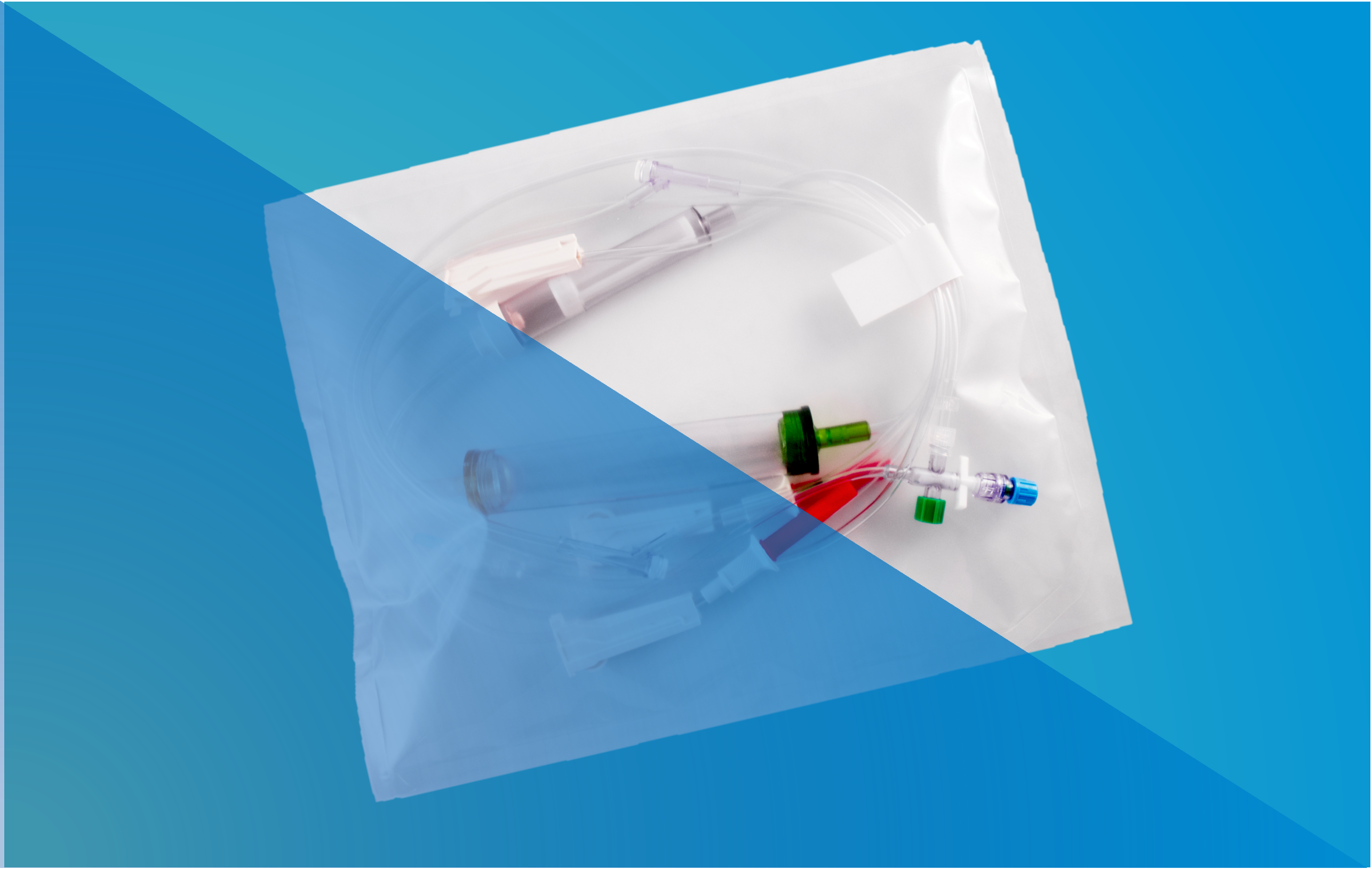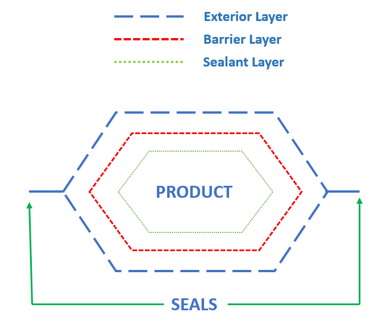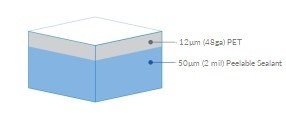A Film Is Not Just Film
When you say healthcare packaging, people often think immediately about sterilization methods. The focus of the conversation will then quickly turn to whether or not a breathable substrate is needed, what coating might work best, and the optimal sealing parameters for the pouch combination.
There are a lot of different films and foils in the market today, and a basic understanding of their differences is important. Here is some simple information about films and foils, which should help you to choose the right substrate for your medical packaging.

The three common techniques for manufacturing film or foil are extrusion coating, extrusion lamination, and adhesive lamination. A film and foil can be manufactured using multiple layers of material, with the most common being an exterior layer, barrier layer (optional), and sealant layer. The purpose of these layers is to protect your device and maintain integrity of the sterile barrier until point of use.

Exterior Layer
The exterior layer comes into contact with the outside world, and touches things like printers and inks, heat seal bars, conveyor belts, and boxes. This layer therefore provides the mechanical protection for the package. There are many options to choose from for this layer, but three common exterior layers include Polyester (PET), Polypropylene (PP) and Nylon (PA).


For example, the advantage of a biaxially-oriented Nylon exterior layer is that it has a very good puncture resistance, very good flex crack resistance, and ok abrasion resistance. If we now look at PET, PET has good puncture and abrasion resistance, however its flex crack resistance is less when compared to Nylon. If we now consider PP, a key property of PP is that it has excellent flex crack resistance when compared to some Nylons and PET.
Barrier Layer
The barrier layer can either be applied to the inside of the external layer or it can have its own separate layer. For example, if a requirement calls for the lowest possible moisture or oxygen barrier:
Two common options are Aluminum Foil (AL) and Aluminum Oxide (AlOx).
The benefits of AL include:
-
Excellent oxygen barrier (O2)
-
Excellent water vapor barrier (WVTR)
-
Excellent UV barrier
The benefits of AlOx are:
-
Excellent oxygen barrier (O2)
-
Excellent water vapor barrier (WVTR)
-
Can be manufactured as a clear film for superior clarity


Both materials will improve the barrier for oxygen and gas, but the AL layer will also be a UV barrier. The AlOx is manufactured as a clear film so this option will provide visibility of the product and yet maintain the barrier requirements.
Sealant Layer
The inside of the film or foil is known as the sealant layer. As this layer is always located on the inside of the package, it will have less interaction with the environment, but it does come into contact with the device. Depending on the substrate, and whether the layer is peel or weld bond, it will create either a peelable seal (which can separate) or a weld bond (which cannot separate).
The modification of the following common materials can aid in the creation of peelable and non-peelable sealants. The most commonly used layers are Low Density Polyethylene (LDPE), Linear Low Density Polyethylene (LLDPE), Polypropylene (PP), Ethylene-vinyl acetate (EVA), and Ionomer.
The benefits of using a peelable sealant layer are the follows:
-
Ease of package opening
-
Integrity assurance
-
The ability to peel from uncoated substrates
-
Peel-ability to other films or foils
-
Relatively high melting point for temperature resistance
To summarize, a film is not just a film. The specific protection you need for your device will determine the best film or foil. This does not always mean you have to go for the thicker material. (If you want to know more about that, you can read the article my colleague Geoff Pavey wrote last year—True or False: Thicker Foil is Best.)
If you want to know more about selecting the right film for your packaging or are looking for education on films, feel free to reach out to me.


.webp)
